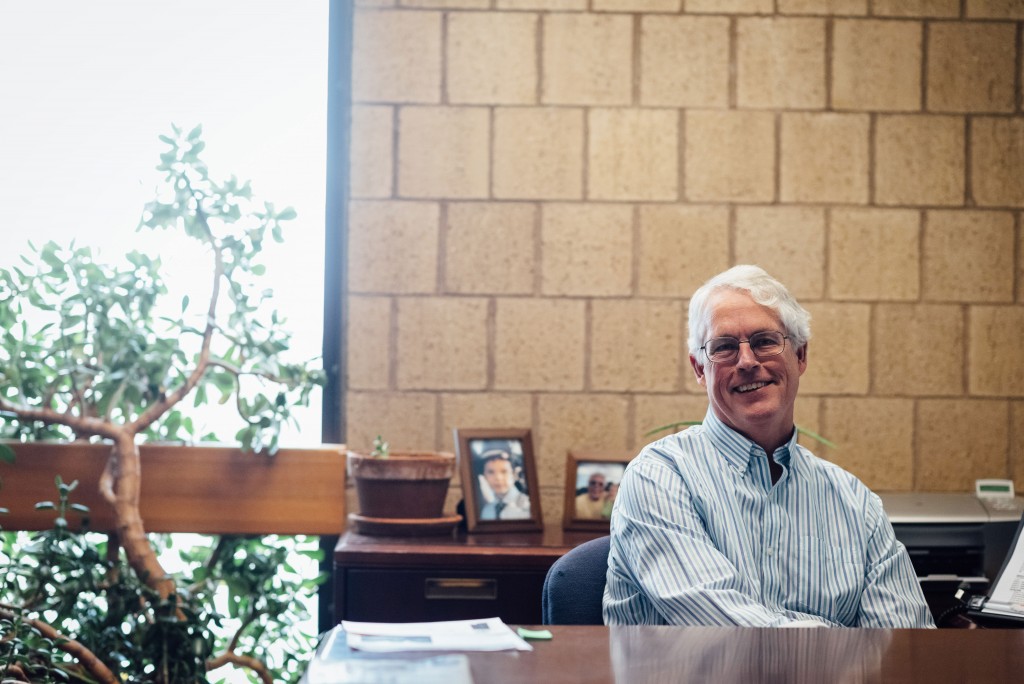
From engineering human skin to discovering cancer-treating devices, Robert Van Buskirk, a professor of biological sciences at Binghamton University, has influenced the biotech field one invention at a time.
Van Buskirk has taught at BU for nearly 30 years, and has been able to share his experiences with students through his classes.
“I look at teaching as a byproduct of what I do,” he explained.
After receiving his bachelor’s and master’s degrees from the University of Vermont in 1972 and 1975, respectively, he went on to receive his doctorate in cell biology from Harvard University and a postdoctorate in biological chemistry at Harvard Medical School in 1985.
Van Buskirk began teaching at BU in early 1990. His interests in tissue engineering, or the process of making artificial skin tissue in the laboratory, brought him to biotech company Merck Millipore in Boston where he worked as a consultant during his summer vacations.
“We developed a very unusual device which strongly suggested to us that, for the first time, we might be able to take human skin cells and build artificial human skin,” he said.
Today, a company called MatTek Corporation sells the engineered human skin internationally to pharmaceutical companies, cosmetic companies and science researchers, and Van Buskirk’s focus has shifted elsewhere. In addition to teaching the principles of cell biology and stem cell biology at BU, he researches in the field of translational science. This interdisciplinary branch of the biomedical field focuses on innovation in cancer prevention, diagnosis and therapies.
Van Buskirk works on these innovations as the vice president of CPSI Biotech, a biomedical technology greenhouse company he started in 2003.
“We made medical devices and laboratory devices,” Van Buskirk said. “They are very unique and designed to treat a variety of different cancers.”
In addition to researching ways to treat cancer, Van Buskirk invites students from Binghamton to the lab in Owego, New York, to show them real-life applications for their studies.
“We make sure that we are as open as possible to be able to bring students in just so they can see that now all laboratories are like biology 117 and 118,” Van Buskirk said. “This is a real working laboratory where the results have to translate into money, in terms of products and sales. It gives them that true sense of what that high risk of bio-tech is.”
Van Buskirk was also formerly the vice president of the NASDAQ-traded biotechnology company BioLife Solutions, Inc. He helped develop wet solutions, which are liquid solutions that contain stem cells, and are now incorporated in over 300 stem cell therapy trials worldwide.
“What’s important about [these solutions] is that means you can ship stems cells around the world,” he said.
According to Christopher Tufo, a former student of Van Buskirk and a senior majoring in biology, part of what makes Van Buskirk a successful teacher is his unique perspective.
“I thought it was interesting that he was able to actually impact the biomedical field,” he said. “I’m going into cell and molecular bio research and development and his class is a part of the reason why.”
Jessica Young, a senior majoring in integrative neuroscience, said she enjoyed learning about the real-life applications when she had him as a professor.
“Taking a lot of science classes, I liked the breath of fresh air by incorporating the business side of stem cells instead of only the rote science,” she said. “Not only is he very knowledgeable about the information, he is in the field himself and can share personal stories and research to back up his information.”


